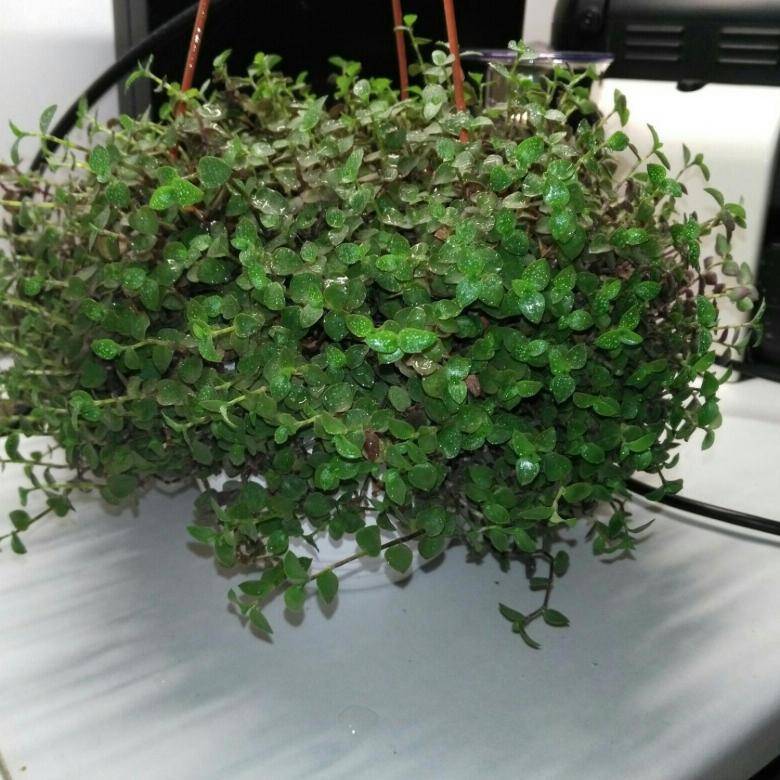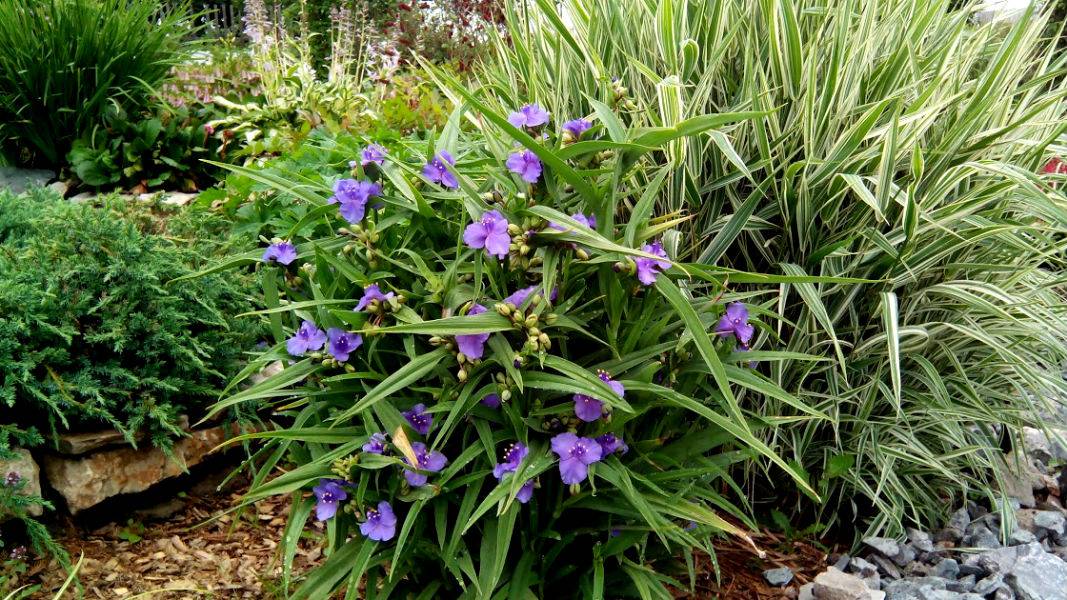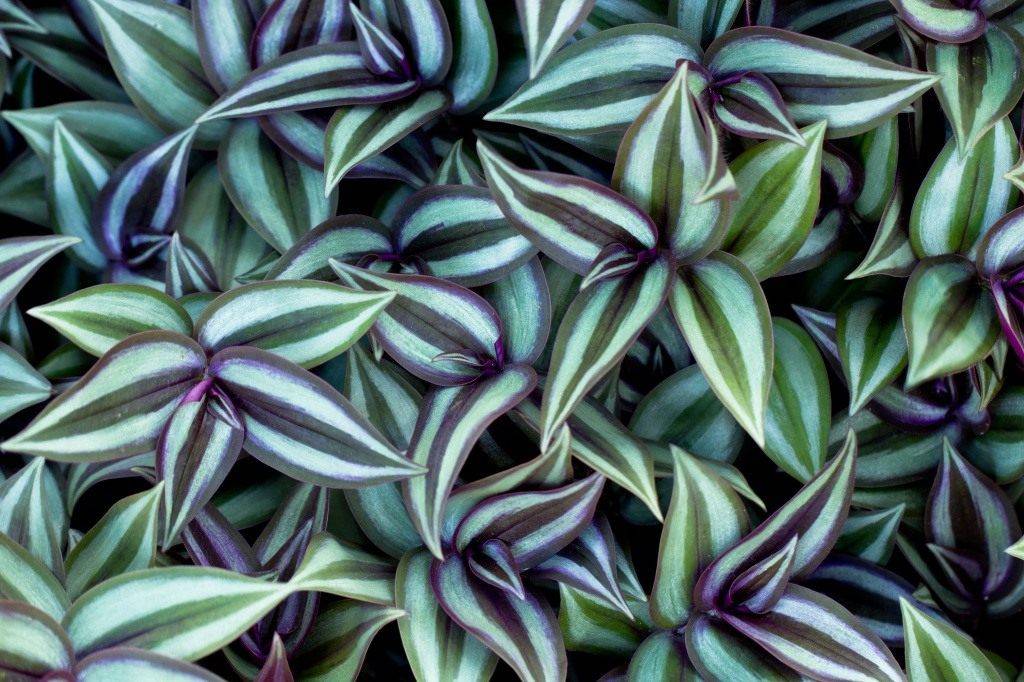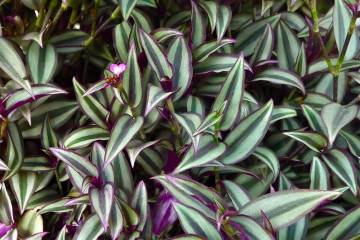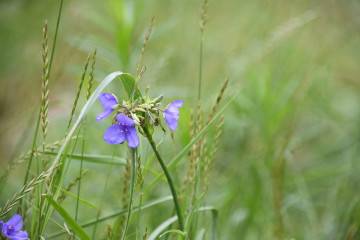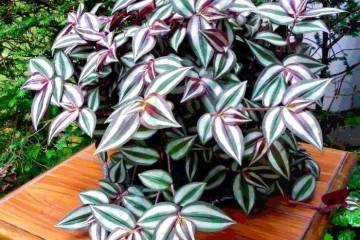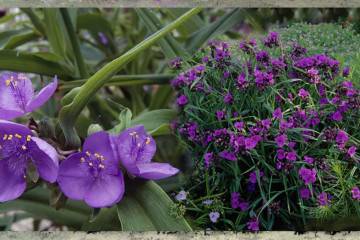Tradescantia reproduction and cultivation of tradescantia from cuttings
Content:
The evergreen perennial belongs to the Kommelinovye family. Today, 30 types of culture are known. Natural habitat tropical and temperate tropical zones. At home (the American continent), this creeping plant is considered a weed. Tradescantia as indoor and garden culture has been cultivated since the 17th century.
Tradescantia: reproduction
The plant reproduces very well by cuttings. All methods give almost 100% survival rate. For horticultural crops, the best breeding time is spring. Indoor flowers are recommended to be propagated in spring, summer and early fall. It is better not to touch them in winter.
How does it multiply
Plant propagation is possible in four ways. It:
- growing tradescantia from cuttings is asexual type of reproduction. With this method, the cuttings are rooted in water, then transplanted into the ground;
- rooting of layers. In the internodes of the lashes there are rudiments of roots. When in contact with the ground, they germinate quickly. They can be cut from the mother bush and planted;
- division of the bush. It is carried out with a spring transplant. The root is divided into parts and seated in separate containers;
- sowing seeds. The bush reproduces by seeds for a long time (2-3 years).
Growing from cuttings
The easiest way to get a new plant is by cuttings. Growing tradescantia from cuttings consists in cutting 12-15 cm pieces of a healthy shoot and rooting.
Next, the planting material is placed in a container with water. It is recommended to disinfect the water with an activated carbon tablet.
After 1.5-2 weeks, roots appear. The seedlings are ready to be transplanted into individual pots. For a larger bush for one pot, you can select several seedlings, since it is not enough to propagate Tradescantia, you need to decorate the bush beautifully.
An important condition for the successful development of an indoor flower is soil fertility.
Often, flower growers bypass the stage of water rooting and plant fresh cuttings immediately in containers with soil. Subject to the temperature and humidity conditions, this method is quite justified.
In both cases, after 1.5-2.5 months, it is realistic to get a mature bush.
Small-leaved Tradescantia: home care
Small-leaved Tradescantia is a dark green branched bush, home care for it is minimal. It is enough to immediately choose a place where the plant will be permanently and plant it in a good substrate. For optimal development of the bush, any bright place is suitable, except for the south side. If it is not possible to avoid direct sunlight, the plant should be shaded.
In summer, the flower is watered daily. Drying out of the soil is not allowed, this leads to drying out and falling of the leaves. The best solution would be to transplant Tradescantia with small leaves in the garden or take the flower out on the terrace in a flowerpot.
Excess moisture leads to root rot. Therefore, after 15-20 minutes, the water should be poured from the pallet. It is important to regularly spray the plant with settled water, to provide an influx of fresh air.
Care for Tradescantia Small-leaved in autumn and winter consists in watering up to 1-2 times a week.
Another popular variety is Tradescantia Reo. Caring for him at home is the same as for small-leaved ones. Lovers are attracted by its appearance with long purple leaves.
Pot for tradescantia
For a young plant, a container with a diameter of 15-20 cm is considered optimal.If the cuttings are initially planted in large pots, the culture will only grow the root system. Good tillering and flowering will take a long time.
Every spring (when transplanting) the size of the pot increases by 1.5-2 cm in diameter
Choosing a land for Tradescantia
The flower develops well in a nutritious, light soil with neutral acidity. To avoid mistakes, you can buy a ready-made composition. Optimal soil option:
- leaf land - 2 parts;
- compost soil - 1 part;
- humus - 1 part;
- river sand - 1 part.
Growing Tradescantia in a bottle
David Latimer and his Tradescantia became world famous. An amateur gardener has grown a crop inside a large bottle. His experience gave rise to mistrust among the masses, but there is no refutation of this fact to this day.
Tradescantia in a bottle has been around for 40 years
The peculiarity of the method is that the bush grows and develops inside a glass flask without air access, watering, feeding. The sealed bottle has been around for over 40 years.
For Latimer, this was the first experience, so after planting, he poured Tradescantia in a bottle once. After that, he corked it and has not opened it since. During this time, the plant filled the entire volume of the container.
Caring for the miracle tradescantia consists in turning the bottle over to the light on different sides. The flower itself is two meters from the window. That is, there are no direct rays, but there is enough light.
The phenomenon can be easily explained. A closed ecosystem is created inside the vessel. Wherein:
- sunlight promotes photosynthesis;
- the released oxygen humidifies the air;
- moisture flows down the walls and moistens the soil;
- central shoots and leaves that have not received sunlight fall off and rot;
- during decomposition, carbon dioxide is released;
- carbon dioxide is involved in photosynthesis.
Thus, the cycle ends. Then it repeats again and again, and so on ad infinitum.
Garden Tradescantia: planting and care in the open field
Varietal abundance made Tradescantia popular. The perennial plant, which is easy to care for, has become a welcome guest in garden plots. It is often used to create landscape design.
The flower can be grown in mono flower beds, mix different varieties of only one crop. The bushes look very picturesque against the background of daylilies and irises. They are used to decorate decorative ponds.
Plants grow tall outdoors. The dense stems are overgrown with long (about 20 cm) leaves. The color of the buds depends on the variety. The flowers are white, pink, blue, purple. Flowering lasts about 4 months, with each bud fading in one day.
Like indoor, garden tradescantia propagates by cuttings, dividing a bush, and seeds. A slightly shaded, windless place with soft, loose soil is suitable for planting a horticultural culture.To prevent rapid drying, it is better to mulch the root area using sawdust, compost, peat.
As a result, planting and caring for garden tradescantia in the open field consists in:
- regular watering;
- loosening;
- fertilizer;
- protection from pests;
- spraying.
Tradescantia: how to pinch
The lashes will grow long without pinching. For good tillering, already in a young plant, it is required to pinch off the tops of the main shoots. Over time, side shoots will appear on the stem and they should also be pinched, creating a spherical flower shape.
How to transplant Tradescantia
Tradescantia does not require a permanent transplant. It grows well, blooms in one place for up to 5 years. After this period, it can be transplanted. By this age, the root system of the bush becomes large, so when transplanting it should not be used entirely. It is better to divide the dug out bush into several parts by the rhizome and plant it.
Transplanting in spring or late summer is also allowed.
The landing algorithm is usual:
- A hole is being dug.
- Drainage and 1/4 of the finished mixture are poured.
- A seedling is planted.
- It is filled up with soil to the surface of the earth.
- The root area is compacted and watered.
How to trim properly
Cropping a crop is usually combined with transplanting. All damaged, bare and too long stems should be trimmed. The bush is given the correct (desired) shape. During the vegetative period, you can carry out a corrective haircut. The plant tolerates such an intervention painlessly.
Why do tradescantia leaves dry
The leaves of tradescantia begin to dry out when the rules of care are violated. For example, leaves can turn yellow and dry from lack of lighting. Dry heat leads to loss of foliage. In the absence of pests and viral diseases, adjusting the care will help solve the problem.
Tradescantia: content temperature
The culture is tolerant of temperature changes. But for good growth and development, it is required to adhere to 22-25 ° C.
For the winter, Tradescantia in the open field is covered with dry foliage, sawdust. It will not hurt to put spruce branches on top.
Why do Tradescantia leaves turn black
On a bush, the leaves can turn black with a lack of watering or excess water. Adjusting the irrigation regime will help to correct the situation.
How to feed Tradescantia
Street Tradescantia needs mineral fertilization during the growing season. The decorativeness of culture suffers from organic matter. For example, on variegated varieties, the leaves may just turn green.
The first time you need to feed the bush in early spring, then in summer. Nitrogen fertilizers are preferred. Then, every 2-3 weeks, complex additives are introduced (any for a flowering plant). With the appearance of the first flowers, the bush needs potash and phosphorus fertilizers. In the fall and winter, there is no need to fertilize the crop.
Tradescantia is ideal for breeding. The culture grows well in the garden and at home. Indoors, it will delight you with lush greenery and beautiful flowers all year round, and in the garden during the growing season it will allow you to create the most bizarre compositions. By the way, there are also medicinal varieties of Tradescantia, for example, Zebrina. Its leaves are used for bruises, purulent wounds.


